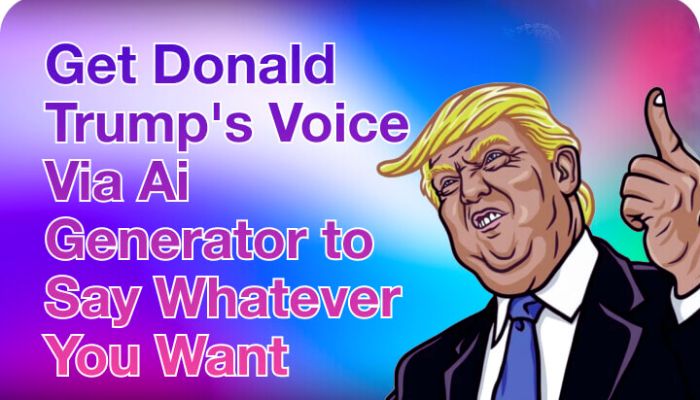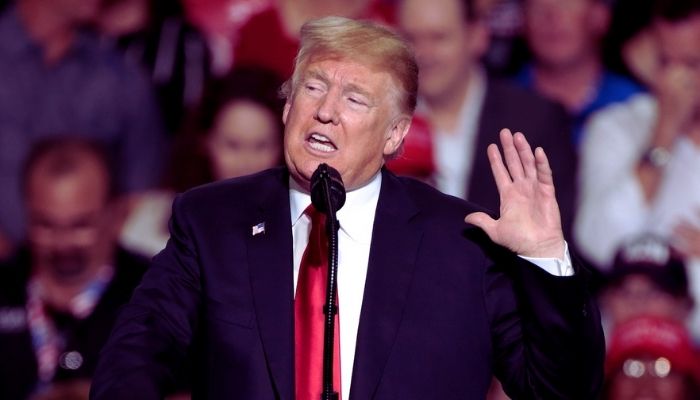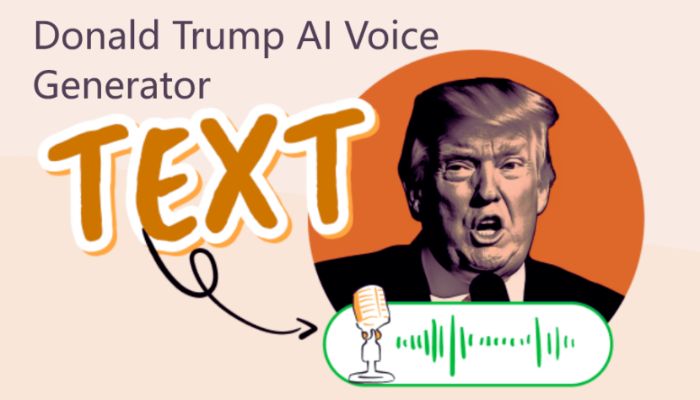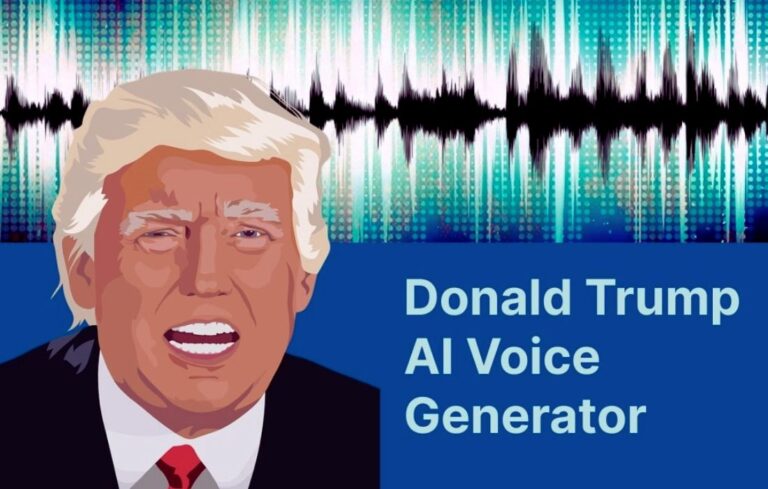In the rapidly evolving landscape of artificial intelligence, one of the most intriguing developments is the emergence of AI-generated voices that can mimic famous personalities. Among these, the “Trump AI voice” stands out as a particularly fascinating and controversial innovation. This technology, which replicates the voice of former U.S. President Donald Trump, is not just a novelty; it’s reshaping the way we think about communication, entertainment, and even politics. In this article, we’ll explore what Trump AI voice technology is, how it works, its uses, the ethical concerns it raises, and what the future might hold for this cutting-edge innovation.
What is Trump AI Voice?
Trump AI voice refers to the use of artificial intelligence to create a digital replica of Donald Trump’s voice. This technology utilizes sophisticated algorithms and deep learning models to analyze and replicate the unique characteristics of Trump’s speech patterns, tone, and cadence. The result is an AI-generated voice that sounds remarkably similar to Trump himself, capable of delivering speeches, reading text, or even engaging in real-time conversations.
Development and Examples
The development of Trump AI voice technology is a product of advancements in machine learning, particularly in the field of neural networks. Companies and researchers have leveraged large datasets of Trump’s speeches, interviews, and public appearances to train these AI models. This technology has been used in various contexts, from humorous parody videos on social media to more serious applications like virtual assistants and automated customer service systems.
For instance, platforms like FakeYou and Descript have made it possible for users to generate their own Trump-like audio clips, often used for entertainment or satirical purposes. These tools allow anyone to input text and have it read aloud in a voice that closely resembles Trump, creating a new form of digital content that is both engaging and, at times, controversial.
How Does Trump AI Voice Work?
The technology behind Trump AI voice is both complex and fascinating. At its core, it involves the use of text-to-speech (TTS) models that have been trained on extensive audio recordings of Donald Trump. These models use deep learning techniques to identify and replicate the specific vocal traits that make Trump’s voice distinctive.
Data Collection and Process
The first step in creating a Trump AI voice involves collecting a large amount of audio data. This includes recordings of Trump’s speeches, interviews, and other public appearances. The more data available, the more accurate the AI model can be in replicating the nuances of Trump’s voice.
Once the data is collected, it is used to train a neural network. This process involves feeding the audio data into the network, which then learns to recognize patterns in Trump’s speech, such as his intonation, pacing, and pronunciation. The model can then generate new speech that closely mimics these patterns.
After training, the model can take any text input and convert it into speech that sounds like Trump. This process, known as inference, is where the AI generates the final audio output, which can be used in various applications.
Uses of Trump AI Voice
The applications of Trump AI voice technology are wide-ranging and varied. While some uses are lighthearted and humorous, others have more serious implications.
Entertainment
One of the most popular uses of Trump AI voice is in the realm of entertainment. Social media platforms are flooded with videos and audio clips where the AI-generated voice of Trump is used for comedic effect. Whether it’s reading children’s books, delivering satirical monologues, or even singing popular songs, the possibilities for humor are endless.
This technology has also found its way into gaming and virtual reality, where players can interact with characters voiced by AI-generated Trump. These applications add a unique layer of immersion and engagement, making the experience more entertaining and memorable.
Marketing and Advertising
In the world of marketing, the Trump AI voice has been used to create attention-grabbing advertisements and promotional content. Brands have experimented with using the voice to deliver messages in a way that stands out and resonates with audiences. Given Trump’s distinctive and recognizable voice, it can be a powerful tool for capturing attention in a crowded media landscape.
Political Implications
The use of Trump AI voice in political contexts is perhaps the most controversial. On one hand, it offers new ways for politicians and activists to engage with the public, using AI-generated voices to deliver speeches or statements in multiple languages or formats. On the other hand, it raises serious concerns about the potential for misinformation and manipulation.
For example, there is a risk that AI-generated Trump voices could be used to create fake news or deepfake content, misleading the public or inciting political tensions. This potential for misuse has led to ongoing debates about the ethical implications of AI voice technology in politics.
Ethical Considerations
The rise of Trump AI voice technology has sparked significant ethical debates. One of the primary concerns is the issue of consent. Given that Trump’s voice is a key part of his public persona, the use of AI to replicate it without his permission raises questions about intellectual property rights and the boundaries of digital likeness.
Another ethical concern is the potential for AI-generated voices to be used in deceptive ways. For instance, deepfake technology, which combines AI-generated audio and video, can create highly convincing but entirely fake representations of real people. This has the potential to undermine trust in media and spread misinformation on a large scale.
Moreover, there are concerns about the impact of AI voices on the job market, particularly for voice actors and others who rely on their vocal talents for their livelihood. As AI voices become more advanced and widespread, there is a risk that they could replace human voices in certain industries, leading to job displacement and economic challenges.
Impact and Controversies
The impact of Trump AI voice technology on society is significant, with both positive and negative aspects.
Public Perception
Public perception of Trump AI voice technology is mixed. While some people find it amusing and enjoy the novelty of hearing Trump’s voice in unexpected contexts, others are more cautious, wary of the potential for misuse. The technology has also sparked debates about the ethical implications of replicating someone’s voice without their consent.
Legal Issues
From a legal standpoint, the use of AI-generated voices is a gray area. Intellectual property laws, which protect a person’s likeness, may not yet fully cover AI-generated voices, leaving room for legal disputes. As the technology continues to evolve, it is likely that lawmakers will need to address these issues and establish clearer guidelines for the use of AI voices.
Impact on Society
The broader impact of Trump AI voice technology on society is still unfolding. On the one hand, it has the potential to enhance communication and make technology more accessible. On the other hand, it poses risks related to privacy, misinformation, and the erosion of trust in media.
Future of Trump AI Voice
Looking ahead, the future of Trump AI voice technology is both exciting and uncertain.
Advancements in AI
As AI technology continues to advance, it is likely that Trump AI voices will become even more accurate and lifelike. This could lead to new applications in fields like education, where AI voices could be used to deliver lectures or provide personalized learning experiences.
Potential Applications
In the future, we may see Trump AI voices being used in more sophisticated ways, such as in virtual assistants or AI-driven political campaigns. These applications could make communication more efficient and personalized but also raise new ethical challenges.
Challenges Ahead
Despite the potential benefits, there are significant challenges ahead. These include technological limitations, such as the difficulty of perfectly replicating human emotion in AI-generated voices, as well as ethical and legal hurdles. Addressing these challenges will be crucial for the responsible development and use of Trump AI voice technology.
Conclusion
Trump AI voice technology is a remarkable innovation that has the potential to change the way we communicate, entertain, and engage with the world. However, it also raises important ethical and legal questions that must be carefully considered. As we move forward, it will be essential to balance the benefits of this technology with the need to protect privacy, prevent misuse, and ensure that AI voices are used responsibly. Whether you’re amused by the novelty of hearing Trump AI voice in a meme or concerned about its implications for society, one thing is clear: Trump AI voice technology is here to stay, and it’s changing conversations in ways we never imagined.
Frequently Asked Questions (FAQs)
What is Trump AI voice?
Trump AI voice is an artificial intelligence technology that replicates the voice of former U.S. President Donald Trump, using deep learning models trained on his speech patterns.
How is Trump AI voice created?
Trump AI voice is created by collecting audio data from Trump’s speeches and public appearances, training a neural network to recognize his vocal traits, and then generating new speech that mimics his voice.
What are the ethical concerns about Trump AI voice?
Ethical concerns include the potential for misuse in spreading misinformation, issues of consent and intellectual property, and the impact on jobs in industries like voice acting.
Can Trump AI voice be used legally?
The legality of using Trump AI voice is still a gray area, with intellectual property laws potentially needing updates to address the use of AI-generated voices.
What are the future implications of AI-generated voices?
Future implications include more advanced applications in education, marketing, and politics, as well as ongoing ethical debates about the responsible use of AI voice technology.

